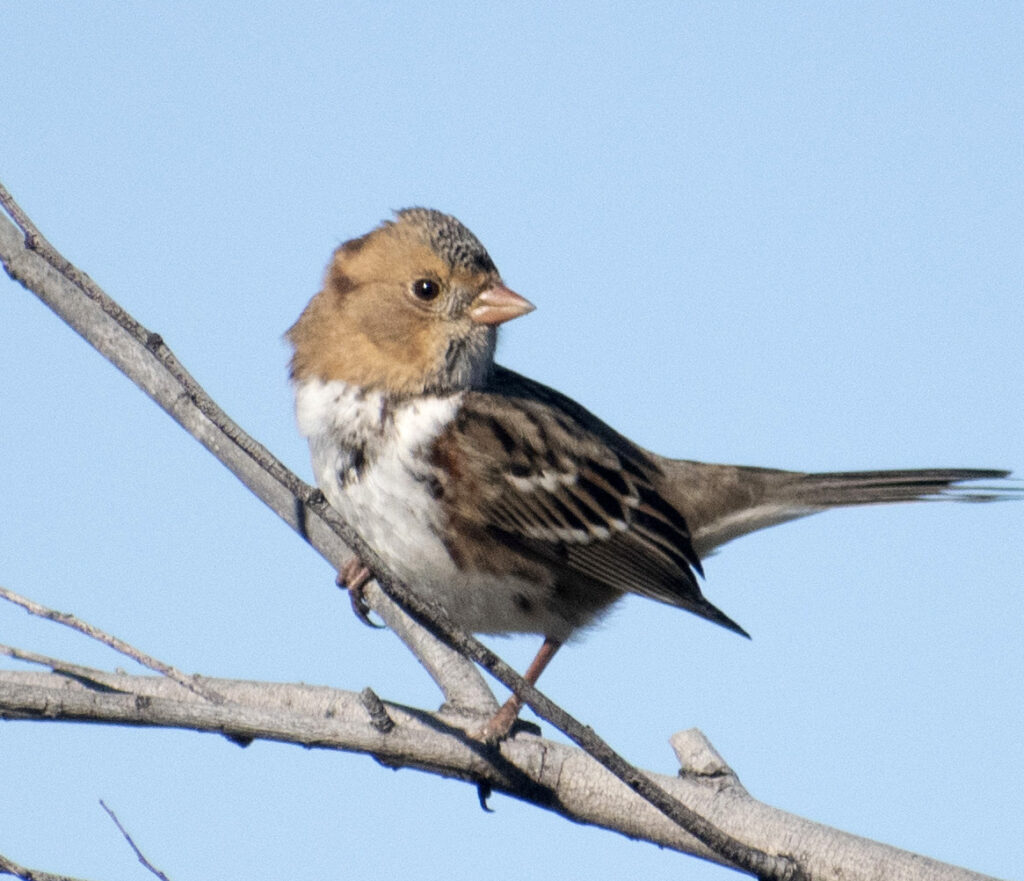
By Grace Huffman
I love the return of the cold weather in the fall. One of my favorite birds to return this time of year is the Harris’s Sparrows. I had my first ones of the fall/winter season at the end of October and now it seems like they are everywhere!
Harris’s Sparrows are some of the largest sparrows outside of towhees (which I also love). They breed in northern Canada and their winter range is centered around Kansas and Oklahoma. Despite a limited normal range, they have a tendency to occasionally wander and they’ve shown up in every state in the lower 48. Harris’s Sparrows have slight changes to their breeding & non-breeding plumages. Breeding Harris’s sparrows have a gray head with a strong black bib. When we see them in the wintertime, they have a buffy face and the bib may have some white in it. If you take the time to watch a flock of them, you might notice that some of them have a larger bib than others. Those that have the larger bibs are older, and are able to command the best food and roosting sites.
Female Harris’s Sparrows build a nest on the ground under short trees like dwarf alder. Once she’s built her cup nest, she’ll lay 3-5 eggs and incubate them for up to 2 weeks, and then the babies grow rapidly, in about a week to a week and a half. They are the only North American songbird to breed in Canada and nowhere else, and their nests weren’t formally described until George Sutton did so in 1931.
Named by John James Audubon for his friend Edward Harris, he was unaware that Thomas Nuttall had already named it Mourning Finch. Harris’s Sparrow is the name that stuck however, and if you want to attract these beautiful sparrows to your yard, they like food such as black oil sunflower seeds & millet.
While they still seem very common here in the winter, Harris’s Sparrows have declined 63% from 1970-2014. Habitat loss in both their breeding and wintering grounds are the biggest problems since they have a fairly limited range. Climate change may also be a factor. Thankfully they are currently not hard to find, and you can hear them calling when you go for a walk or even from your backyard feeders!
(Information credit to allaboutbirds.org)
